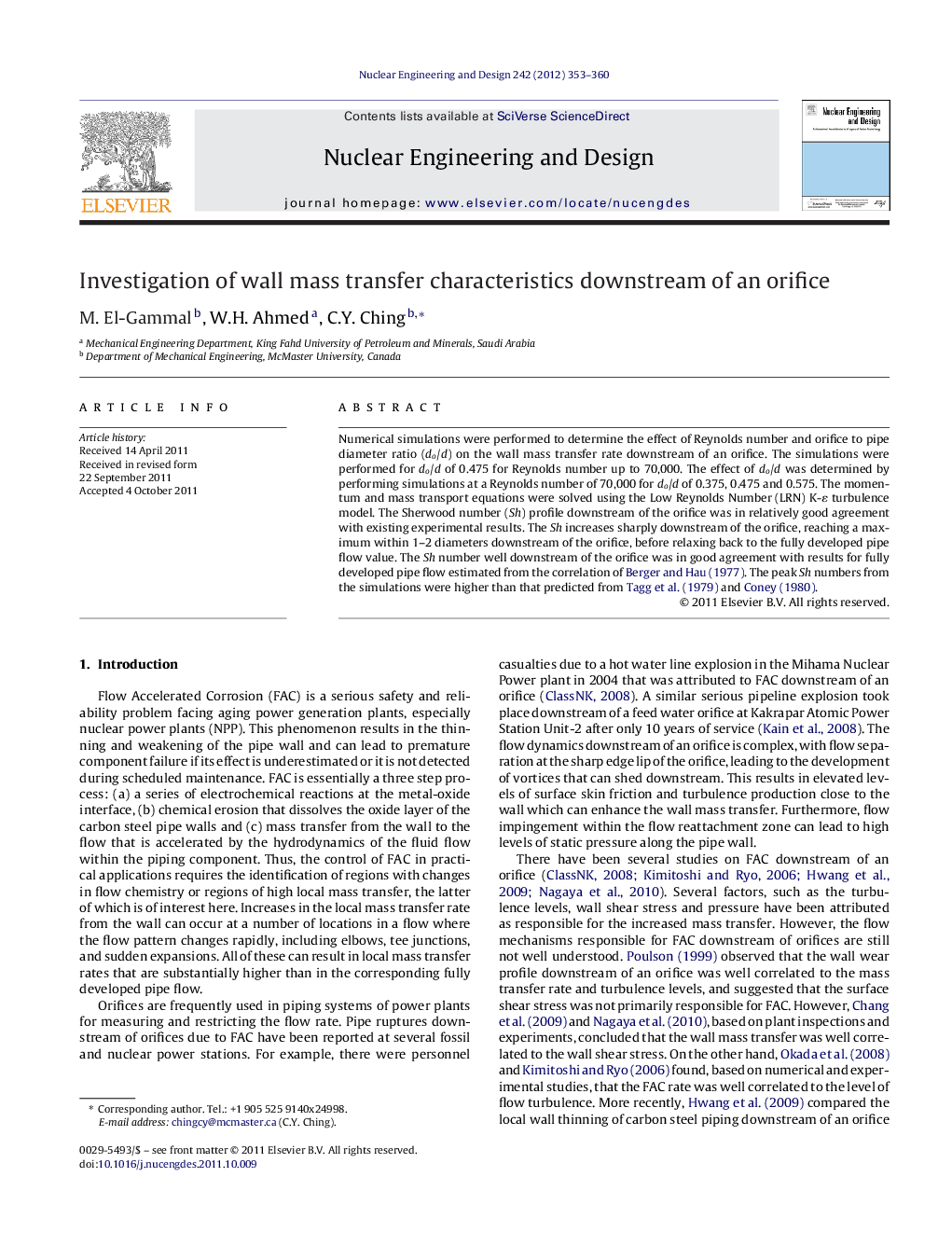| Article ID | Journal | Published Year | Pages | File Type |
|---|---|---|---|---|
| 297364 | Nuclear Engineering and Design | 2012 | 8 Pages |
Numerical simulations were performed to determine the effect of Reynolds number and orifice to pipe diameter ratio (do/d) on the wall mass transfer rate downstream of an orifice. The simulations were performed for do/d of 0.475 for Reynolds number up to 70,000. The effect of do/d was determined by performing simulations at a Reynolds number of 70,000 for do/d of 0.375, 0.475 and 0.575. The momentum and mass transport equations were solved using the Low Reynolds Number (LRN) K-ɛ turbulence model. The Sherwood number (Sh) profile downstream of the orifice was in relatively good agreement with existing experimental results. The Sh increases sharply downstream of the orifice, reaching a maximum within 1–2 diameters downstream of the orifice, before relaxing back to the fully developed pipe flow value. The Sh number well downstream of the orifice was in good agreement with results for fully developed pipe flow estimated from the correlation of Berger and Hau (1977). The peak Sh numbers from the simulations were higher than that predicted from Tagg et al. (1979) and Coney (1980).
► Numerical simulations were performed for the mass transfer downstream of an orifice. ► The Low Reynolds Number K-ɛ turbulence model was used. ► The numerical results were in good agreement with existing experimental results. ► The maximum Sherwood number downstream of the orifice was significantly affected by the Reynolds number. ► The Sherwood number profile was well correlated with the turbulence kinetic energy profile close to the wall.
